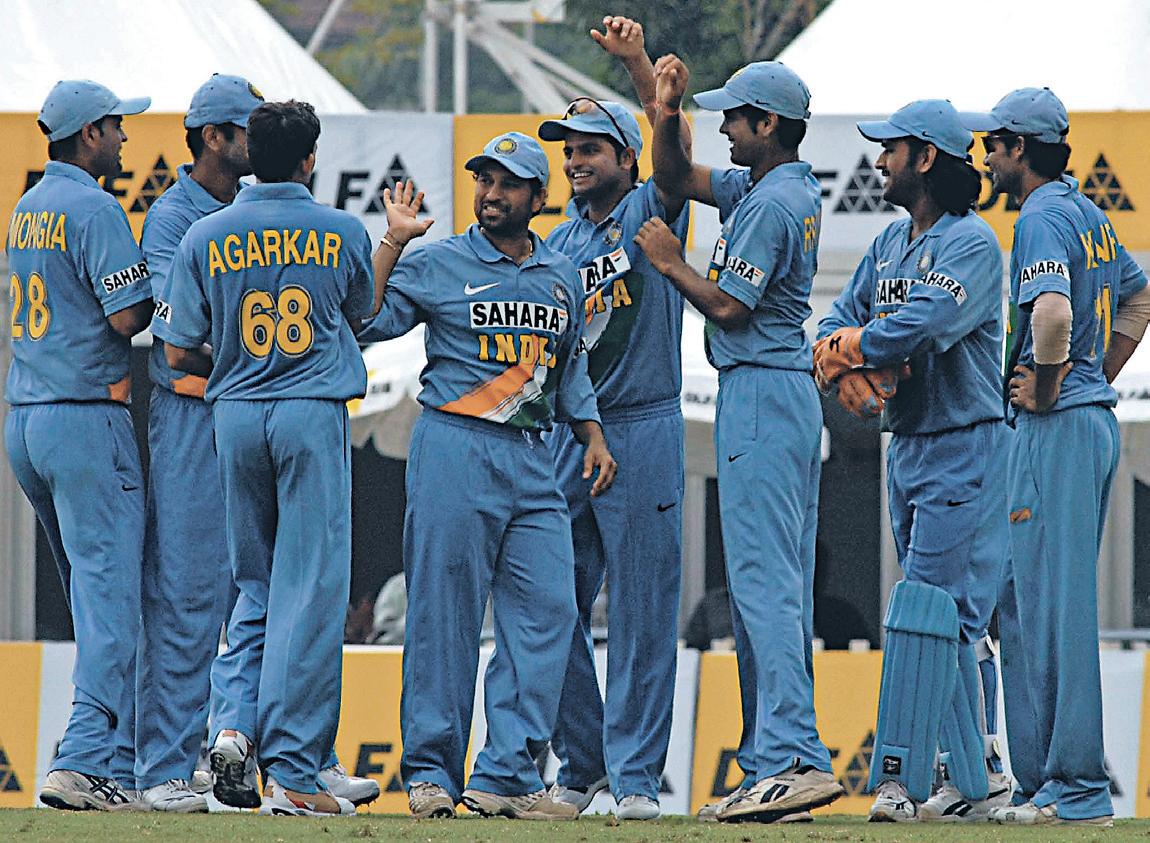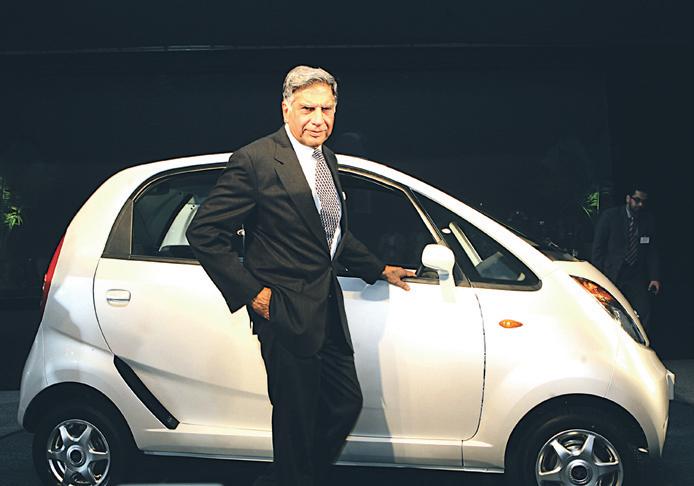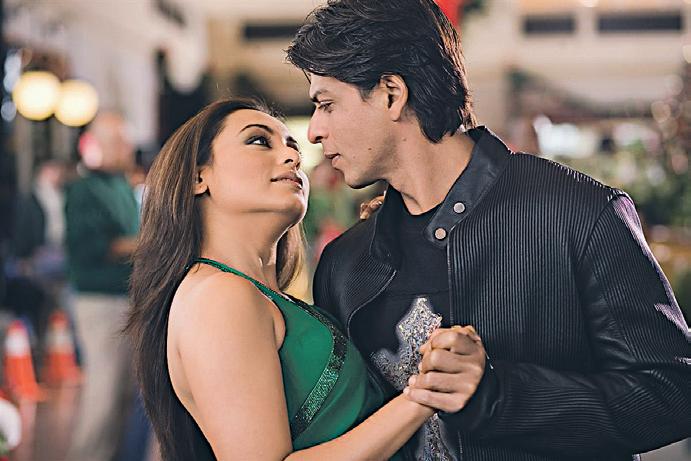
7 minute read
Cover Story
from 2009-08 Melbourne
by Indian Link
Continued from page 9
Burgeoning industry
Besides IT, the south Asian giant is emerging as a force to reckon with in diverse sectors including dairy, automotive and ancillaries, pharmaceutical, cement and of course, new media and entertainment.
Dairy India is the world’s highest milk producer (108 million tones per year) and all set to become the world’s largest food factory. As it enters an era of economic reforms, agriculture, particularly the livestock sector, is positioned to be a major growth area. The fact that dairying could play a more constructive role in promoting rural welfare and reducing poverty is increasingly being recognized. What started as a trickle in Kaira district of Gujarat back in 1948 has become a flood today – Operation Flood. The celebrated Indian brand Amul was born as a white revolution swept the than the export market. However, owing to the growth of global generics market, stringent price controls in the domestic market and better margins, the export market is growing much faster than the domestic market. Traditional branded generics presently dominate the Indian market but the future will see strong growth in the specialty branded generics and patented drug segments. Drugs for diabetes and cardiovascular diseases are expected to see the fastest growth among all therapy areas during 2007-2011. The retail pharmaceutical market is presently highly unorganized; however, a vast opportunity exists for the organized market.
Howzzat!
Cricket! The life and breath of Indian sport, cricket has now transcended from a mere game to reverence akin to a religion. Cricket is the unofficial national game of India and is enjoyed by its millions, within and without the country.
Cricket was introduced in India around the 17th century. The first ever cricket match was played in 1721, but it wasn’t until 1848 that the Oriental Cricket Club was established in Mumbai. The first official cricket match was played between Parsis technique, even his integrity and humility. Other incredible players who gave credence to the Indian team are Rahul Dravid, Anil Kumble, Sourav Ganguly and Javagal Srinath.
The current cricket team continues to show promise, with a whole new batch of youthful and enthusiastic young guns ready to show off their talent and attitude.
Mahendra Singh Dhoni, S.Sreesanth, Munaf Patel, Gautam Gambhir, Irfan Pathan and Yousuf Pathan are some of these. Under the enthusiastic captainship of Dhoni, the young team successfully won the first Twenty-20 Cricket World Cup held in the year 2007.
Bring it on, Bollywood!
The pride of Mumbai, Bollywood is now a global, if not a household name. The soubriquet came into being in the 1970s when India overtook America as the world’s largest film producer.
nation. National Dairy Development Board (NDDB) emerged as the world’s largest dairy development initiative and in the process millions of rural dairy farmers found new hope. NDDB’s Perspective 2010 focuses on four key areas - strengthening cooperative business, production enhancement, assuring quality and creating a national information network.
Auto With Tata Nano becoming the buzzword in industry circles, India’s automobile industry, (tenth largest in the world), is also a growth area. Its annual production is in excess of 2 million units. And it has been predicted that India will become a major global auto hub in the immediate future.
The perception of car ownership as a luxury changed when Maruti Udyog entered the market. While a number of domestic companies continue to cater to the local market, the growing presence of multinational investment has led to a spurt in overall growth. Following economic liberalization in India, the auto industry demonstrated sustained growth as a result of increased competitiveness and relaxed restrictions. The monthly sales of passenger cars in India now exceed 100,000 units and the industry employs 15 million people. With domestic production skyrocketing, the government’s 10-year plan aims to create a $145 billion auto industry by 2016. With an export potential of $ 25 billion, India’s passenger vehicle exports are forecast to rise from 170,000 in 2006 to 500,000 in 2010. Currently it is the world’s largest manufacturer of small cars.

Pharma With a US$ 8.2 billion pharmaceutical industry, India is one of the fastest emerging pharmaceutical markets in the world. The market, presently driven by over a billion population, an expanding GDP and rapid epidemiological transitions, is expected to be the major player in the global pharmaceutical market both in terms of its large domestic market and also as a pharmaceutical export hub.
The size of the domestic market is larger and Europeans in 1877, but it became a popular sport only in the late 19th century. Cricket began to mesmerise the nation when Indians like Sir Ranjitisinhji and Sir Duleepsinhji began playing for the English cricket team in the 1900s. Their skill and scores helped raise the interest and prestige of the game among Indians. The Ranji Trophy which began in 1934-35 still continues today, and is one of the most prestigious championships in India.
After independence, India made its first ever Test Series victory against arch rival Pakistan in 1952, giving the game a huge boost. Some of India’s cricketing giants like Vijay Manjarekar, S M Gupte and Polly Umrigar displayed remarkable skills in this series.
The sport has had its share of talent, like E Prasanna, B S Chandrasekhar, Srinivas Venkataraghavan and Bishan Singh Bedi in the ‘70s, and of course, two of its most gifted batsmen Sunil Gavaskar and Gundappa Vishwanath, also emerged during this time. The ‘80s saw the Indian cricket team scaling new heights in One Day International (ODI) cricket, and under the captainship of Kapil Dev, the team even managed to grab the 1983 Cricket World Cup. The ‘90s brought Sachin Tendulkar, the boy wonder into the spotlight and India gained a reputation as never before. Sachin still plays for India and is considered as one of the all time greats of world cricket. He is respected internationally for his style and
Bollywood began its foray into the world of cinematography with Raja Harishchandra (1913) by Dadasaheb Phalke, a silent feature film made in India. By the 1930s, the industry was producing over 200 films per annum. The first Indian sound film, Ardeshir Irani’s Alam Ara (1931), was a major commercial success. Song and dance musicals followed, creating a distinct genre which is now the stereotype of Bollywood. Most Bollywood films of this era were escapist, with just a few brave filmmakers tackling tough social issues.
The year 1937 saw the first colour film made in Hindi by Ardeshir Irani of Alam Ara fame, called Kisan Kanya.
Post Independence, some of the most critically-acclaimed Hindi films of all time were produced, during what seemed the ‘Golden Age’ of Bollywood. Guru Dutt’s films Pyaasa (1957) and Kaagaz Ke Phool (1959) and the Raj Kapoor films Awaara (1951) and Shree 420 (1955) were hugely popular as they expressed social themes dealing with working-class urban life. Some of the most famous films of Hindi cinema starring actors like Rajesh Khanna and Dharmendra, and actresses like Sharmila Tagore and Mumtaz. But the mid-1970s brought the trend of gritty, violent films about gangsters and bandits, like Sholay and Deewar. Amitabh Bachchan, Mithun Chakraborty and Anil Kapoor shone during this era, which lasted into the early 1990s. The most internationally-acclaimed Hindi film of the 1980s was Mira Nair’s Salaam Bombay! (1988), which won the Camera d’Or at the 1988 Cannes Film Festival and was nominated for an Oscar. During this time and through the ‘90s, family-centric romantic musicals returned to popularity and a whole breed of new young actors emerged. Aamir Khan, Salman Khan and Shahrukh Khan, as well as actresses like Sridevi, Madhuri Dixit and Juhi Chawla shot into fame. Action and comedy genres were also popular, with actors like Govinda, Akshay Kumar, Raveena Tandon and Karisma Kapoor frequently appearing on the big screen. A new and distinct genre of films was born, known as the Mumbai noir, which were urban films reflecting social problems. Parallel cinema followed soon after featuring critically acclaimed and powerful acting by stalwarts like Nana Patekar and Naseeruddin Shah. were also produced at the time, including Mehboob Khan’s Mother India (1957), which was nominated for the Academy Award for Best Foreign Language Film.
The millennium has seen Bollywood’s popularity grow internationally, particularly since the past few years. Filmmaking reached new heights in terms of quality, cinematography and innovative story lines, as well as technical advances in special effects, animation, etc. The explosion of multiplexes aided this growth and produced some blockbusters like Lagaan (2001), Devdas (2002), Koi... Mil Gaya (2003), Kal Ho Naa Ho (2003), Veer-Zaara (2004), Rang De Basanti (2006), Lage Raho Munnabhai (2006), Om Shanti Om (2007), Taare Zameen Par (2007) and Ghajini (2008), delivering a new generation of popular actors like Hrithik Roshan and Abhishek Bachchan, and actresses like Aishwarya Rai, Preity Zinta and Rani Mukerji..
Major influences that have shaped the conventions of popular cinema are ancient epics and Sanskrit drama, traditional folk theatre, Parsi theatre, Hollywood and western musicals.
Bollywood has also influenced Hollywood; Baz Luhrmann stated that his musical film Moulin Rouge! (2001) was directly inspired by Bollywood. Danny Boyle’s Slumdog Millionaire (2008), which won four Golden Globes and eight Academy Awards, was also directly inspired by Bollywood, and is considered to be a “homage to Hindi commercial cinema”.
A talented crop of actors began to bask in the spotlight, some of these being Dev Anand, Dilip Kumar, Raj Kapoor and Guru Dutt, while successful actresses included Nargis, Meena Kumari, Nutan, Madhubala, Waheeda Rehman and Mala Sinha.
The late 1960s and early 1970s saw an influx of romance movies and action films
Everyone loves Bollywood and its films, and a good entertainer is generally referred to as paisa vasool (literally, “money’s worth”). Songs and dances, love triangles, comedy and dare-devil thrills are all mixed up in three-hour-long extravaganzas with an intermission. These masala films remain popular, but parallel and art cinema, Mumbai noir and films with strong social, and lately psychological, movies are gaining in popularity.
Bollywood is now a statement, not just of Indian culture, tradition and its diversities, nor of simply song, dance and a good dose of melodrama, nor even of current fashion and lifestyle trends in India, but it’s an emerging giant in the world of global cinema.
With input by Usha Arvind











